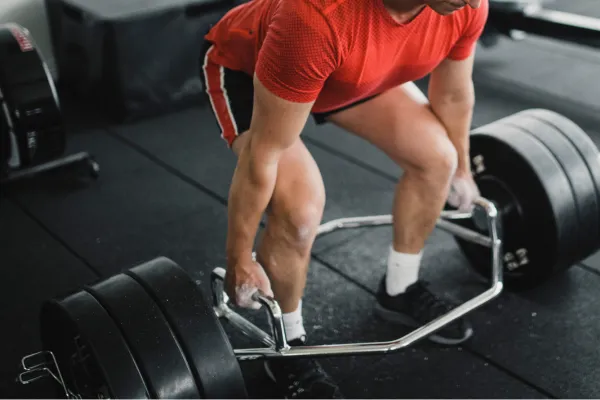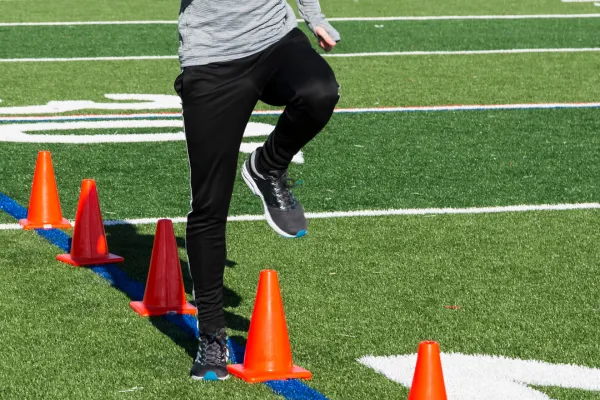
It’s Killing Your Athletes’ Game Performance
As a coach, your job is to prepare athletes for competition, and that means preparing them for the physiological and biomechanical demands of their sport. But here’s the tough truth: if you're still programming steady-state running (think long jogs or laps) as a conditioning tool for sports like softball, baseball, football, soccer, tennis, wrestling, volleyball, or basketball athletes, you're training them in a way that conflicts with their performance needs.
Why It Matters: Game Speed ≠ Jogging
Most mat, field, and court sports require short bursts of high-intensity effort—sprinting, jumping, cutting, reacting—not steady aerobic output. When we ask athletes to log slow, continuous miles, we’re not just wasting time. We may actually be blunting the development of explosive power, speed, and agility—the very qualities that define elite performance.
The Science: What You Should Know
1. It targets the wrong muscle fibers.
Steady-state aerobic work emphasizes slow-twitch fibers, which are great for endurance but not for the fast, powerful actions sports demand. Explosive movements rely on fast-twitch fibers, which can be suppressed with too much aerobic volume (Wilson et al., 2012).
2. It causes the “interference effect.”
When aerobic and strength/power training are combined improperly, the body struggles to adapt to both. This can reduce gains in speed, strength, and hypertrophy—especially when endurance work is performed in high volume or intensity (Fyfe, Bishop, & Stepto, 2014).
3. It mismatches energy system demands.
Sports like basketball, softball, and football are anaerobic-dominant, relying on the phosphagen and glycolytic systems for repeated high-intensity efforts. Aerobic base work does not adequately prepare athletes for this kind of physiological stress (Bishop, Girard, & Mendez-Villanueva, 2011).
So What Should Coaches Do Instead?
You don’t need to abandon conditioning—just condition smarter. Here’s how to train for what actually happens in competition:
Goal: First-Step Quickness
Train With:
Sled sprints (light to moderate load)
Short accelerations (5–10 yards) from sport-specific positions
Visual or auditory reaction drills
Why: First-step quickness comes from neuromuscular efficiency and rate of force development. Sprinting against resistance trains both (Ross, Leveritt, & Riek, 2001).
Goal: Vertical and Lateral Power
Train With:
Plyometrics (box jumps, lateral bounds, depth jumps)
Olympic lifts (clean pulls, hang snatches)
Weighted jump squats
Why: Plyos train the stretch-shortening cycle, and Olympic lifting transfers force production into vertical or lateral motion—key for rebounding, jumping, and base stealing (Markovic & Mikulic, 2010).
Goal: Explosive Power + Repeat Sprint Ability
Train With:
Contrast training (e.g., heavy squat + vertical jump)
Med ball throws (rotational, overhead, chest pass)
10–30 sec sprint intervals (full effort, full recovery)
Why: High-intensity work with proper rest mimics the start-stop rhythm of sport and develops both peak power and repeat-effort capacity (Hodgson, Docherty, & Robbins, 2005).
Goal: Sport-Specific Conditioning
Train With:
HIIT (30–60 seconds of game-speed work with controlled rest)
Change-of-direction shuttles
Small-sided competitive games
Why: These drills train the anaerobic systems in ways that reflect game demands—short bursts, fast recovery, rapid decision-making (Bishop et al., 2011).
Goal: Injury Prevention and Performance Longevity
Train With:
Eccentric hamstring work
Landing mechanics and deceleration drills
Mobility + activation routines
Why: Strong eccentric control reduces the risk of ACL and hamstring injuries and enhances control during changes in direction (van der Horst et al., 2015).
The Bottom Line for Coaches

If your athletes are still running mile repeats or jogging laps to “get in shape,” they’re preparing for a
race that doesn’t exist in their sport. Conditioning should not come at the cost of speed, power, or readiness. It should reinforce it.
Train movement. Train intent. Train energy systems that matter. The modern game is fast—your training should be, too.
Coach Julie Hatfield-Still
About the Author:
Julie is an Author, CEO and Coach. She is the Brand Executive at the IYCA, the President & Founder of the Non-Profit Beyond The Game Alliance where they offer a full suite of workshops and support for teams, coaches and parents. In addition to her work as a business consultant and coach of coaches, leaders and entrepreneurs.
Julie is a Speed Development Specialist and Inner-Game Coach at the college, high school and youth levels.
Visit Julie’s Author Page
References
Bishop, D., Girard, O., & Mendez-Villanueva, A. (2011). Repeated-sprint ability—Part II. Sports Medicine, 41(9), 741–756. https://doi.org/10.2165/11590560-000000000-00000
Fyfe, J. J., Bishop, D. J., & Stepto, N. K. (2014). Interference between concurrent resistance and endurance exercise: Molecular bases and the role of individual training variables. Sports Medicine, 44(6), 743–762. https://doi.org/10.1007/s40279-014-0162-1
Hodgson, M., Docherty, D., & Robbins, D. (2005). Post-activation potentiation: Underlying physiology and implications for motor performance. Sports Medicine, 35(7), 585–595. https://doi.org/10.2165/00007256-200535070-00004
Markovic, G., & Mikulic, P. (2010). Neuro-musculoskeletal and performance adaptations to lower-extremity plyometric training. Sports Medicine, 40(10), 859–895. https://doi.org/10.2165/11318370-000000000-00000
Ross, A., Leveritt, M., & Riek, S. (2001). Neural influences on sprint running. Sports Medicine, 31(6), 409–425. https://doi.org/10.2165/00007256-200131060-00002
van der Horst, N., Smits, D. W., Petersen, J., Goedhart, E. A., & Backx, F. J. (2015). The preventive effect of the Nordic hamstring exercise on hamstring injuries in amateur soccer players: A randomized controlled trial. The American Journal of Sports Medicine, 43(6), 1316–1323. https://doi.org/10.1177/0363546514566481
Wilson, J. M., Marin, P. J., Rhea, M. R., Wilson, S. M., Loenneke, J. P., & Anderson, J. C. (2012). Concurrent training: A meta-analysis examining interference of aerobic and resistance exercises. Journal of Strength and Conditioning Research, 26(8), 2293–2307. https://doi.org/10.1519/JSC.0b013e31823a3e2d








